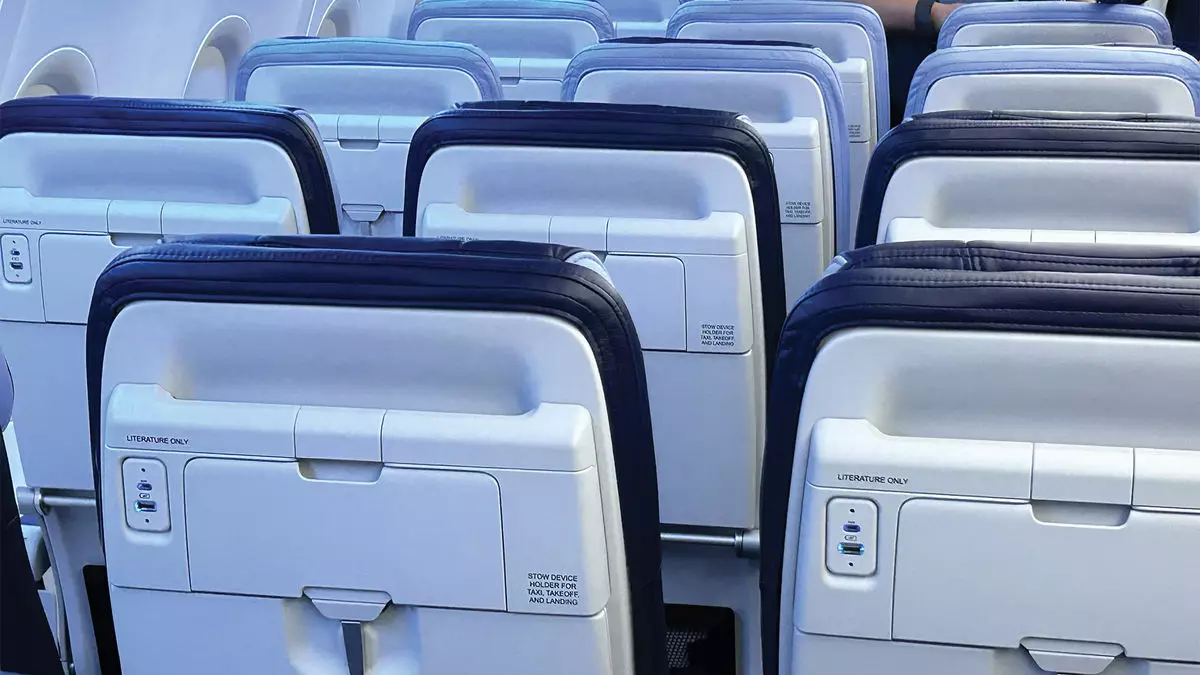Southwest Airlines has recently announced a significant delay in its plans to reconfigure its fleet for extra-legroom seating, now set to commence in mid-2025 instead of the initially anticipated March 2025 timeline. This extended revision raises questions about the airline’s adaptability in meeting passenger demands for greater comfort. As travelers increasingly prioritize space and comfort in their flying experiences, the postponement of these enhancements may impact customer satisfaction in a competitive market.
The introduction of extra-legroom seats promises to redefine the flying experience with approximately one-third of Southwest’s aircraft featuring this new configuration. The extra-legroom seats will offer a generous 34 inches of space between rows, a welcome improvement that addresses the growing noise about cramped legroom in the airline industry. However, this transition will come at a cost; to accommodate these new seats on the larger 737-8 aircraft, Southwest will decrease the standard seat spacing from 32 inches to 31 inches. For its 737-7 planes, the airline will outright remove some existing seats to facilitate the extra-legroom offerings.
The decision to stagger the rollout of these premium features until 2026, coupled with a limited strategy of allowing early boarders to access them first, indicates a cautious approach. This delay in offering a distinct product could hinder Southwest’s competitiveness against rivals who already provide such options, especially as expectations evolve amongst travelers.
Challenges extend beyond mere logistics. The Federal Aviation Administration (FAA) must first grant Southwest two critical certifications: the weight and balance certification, expected in early 2025, and the coveted Supplemental Type Certificate (STC), likely pushed to the second quarter of next year. These regulatory checkpoints may complicate the timeline and execution of the retrofitting process, resulting in further delays or unforeseen challenges.
In a more positive vein, Southwest Airlines has been proactive in implementing its commercial transformation plan, which includes the strengthening of market partnerships. A noteworthy development is the interline partnership with Icelandair, set to begin operations in February 2025. This endeavor represents an important step for Southwest as it expands its networks and offers customers more travel options. Additionally, the introduction of “Getaways by Southwest,” which aims to centralize vacation packages, indicates a strategic pivot towards direct sales and partnerships, such as the collaboration with MGM Resorts in Las Vegas.
This innovative approach not only enhances the consumer experience but streamlines operations, ensuring that Southwest remains competitive in a rapidly evolving travel landscape.
In evaluating Southwest’s financial performance, the airline has demonstrated resilience, posting a net income of $261 million in the fourth quarter— a notable recovery from the net loss of $252 million experienced in the same quarter the previous year. With operating revenues at $6.9 billion, reflecting a 1.6% increase from the previous year, and a commendable reduction in operating expenses by 7.9%—largely driven by plummeting fuel prices—the airline is navigating financial challenges effectively.
For the entirety of 2024, Southwest’s net income remained stable at $465 million, mirroring its performance in 2023, while revenue grew to $27.5 billion, marking a 5.3% increase propelled by a 4.4% uptick in overall capacity. Despite the satisfaction of maintaining profitability, the projected margin improvement from 1.2% in 2024 to a target margin of 3% to 5% in 2025 remains optimistic given the historical context of the industry’s margins.
As Southwest Airlines navigates its fleet modifications and responds to evolving customer preferences, a delicate balancing act awaits. The introduction of extra-legroom seating and strategic partnerships indicates a commitment to customer satisfaction and organizational growth. However, overcoming regulatory hurdles and ensuring timely deliveries of services will be crucial as the airline positions itself for future profitability while maintaining its core values of accessibility and affordability. Only time will reveal how these strategies will reshape the flying experience for millions of travelers, but the foundation laid today may prove pivotal in securing Southwest’s future in the competitive airline market.


Leave a Reply